Features of pruning plums in autumn
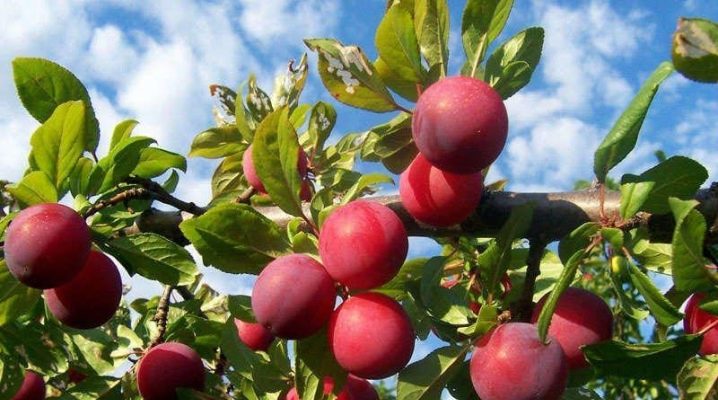
The plum is considered a demanding and vulnerable fruit tree that requires delicate handling. She is really sensitive to influences not only external, inevitable, but also to the procedures carried out by the gardener himself. And to the same pruning, for example. A natural question is whether pruning is necessary if the tree reacts so sensitively to everything. It is necessary, but how to carry it out so that it becomes a little stress for the tree is a big, ramified question that requires immersion in the topic.
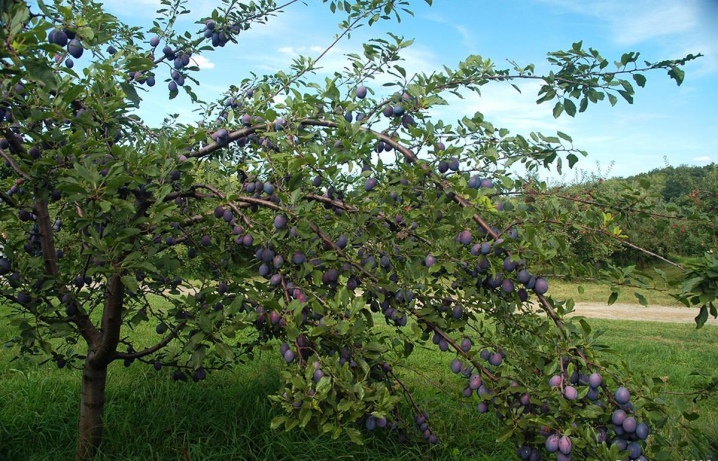
The need for a procedure
The tree is compact - a novice gardener will think - it does not grow in breadth, why should it still be cut. And he may not know that the crown of the plum grows very quickly, and the branches are often intertwined. Of course, at first this growth can be assessed as a blessing. The volume, which is necessary for fruiting, is really growing in the plum, which also affects the yield.
But you can look so optimistically at the tree only for the first 4-5 years of growth, then the need for pruning begins to mature.
Voids form inside the crown, while branches thicken at the periphery. They grow very long, too thin for that length. This leads to an uneven yield, the fruits become smaller in size, and their quality decreases. And new fruitful branches, if you do not interfere with the process, will not wait.

And yet the plum is afraid of cold weather, and in a weakened state it may not survive them.
For this, autumn pruning is required, carried out at the correct time, according to the correct algorithm. It will allow the tree to increase yields, lighten the nutritional load, and finally, give it a well-groomed appearance. In addition, there is no particular difficulty in pruning.

When can you trim?
You can do it in the fall, but you can do it in the spring. Autumn pruning is more suitable for areas with mild winters, and if there are forecasts for a harsh winter, it is better to postpone the procedure to spring. Traditionally, the plum is cut from September to October, if in the spring - more often in April. The timing of the procedure depends on the purpose of pruning, on the age of the plum, from the region.
Pruning in the fall is designed to prepare the tree for winter. And it is carried out only when the plum has completely dropped the foliage. Once the growing season is over, you can pick up a pruner or garden shears. Broken branches, dry, overgrowing, damaged or diseased branches will have to be removed.
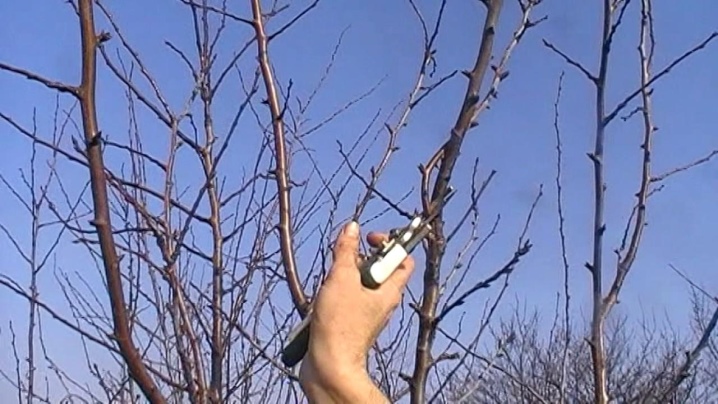
Plum pruning - timing by region:
- Moscow region, middle strip - September-October (if possible, move to spring);
- Urals and Siberia - September (if it is not possible to postpone pruning until spring);
- Leningrad Region - September-early October (but still better in spring);
- Southern regions, the Black Sea region, the south of the Volga region, Kuban, Crimea - the last week of September-October.
You can also check the pruning schedule with the lunar calendar, the main thing is to make sure that it is for the current year.
After pruning, the tree will come to life for at least a month. This means that so much time should remain until the cold weather.
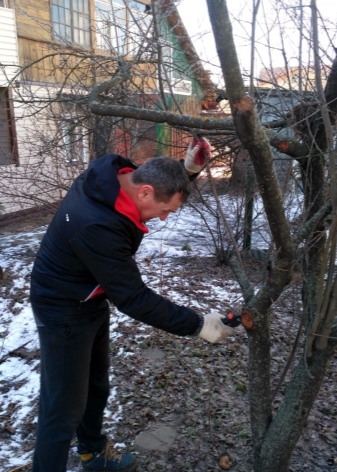
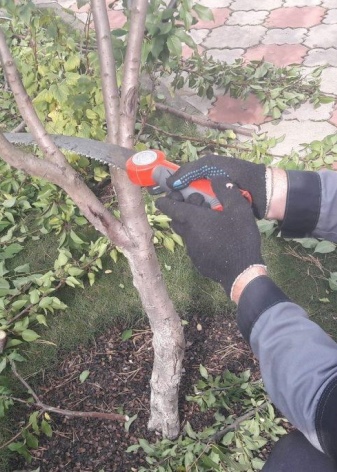
Views
Pruning as a procedure can serve a variety of purposes. At some point, it is necessary to shape the crown, at some point to remove the length for sanitary purposes. After a few years, the tree will rejuvenate with pruning.
Sanitary
It is held every season, every year, starting from the second or third year after planting a plum in the garden.
Sanitary pruning tasks:
- remove dried and damaged branches;
- cut out those that grow along the crown and thicken it;
- remove closely growing, intertwined branches;
- weak and thin processes will also have to be removed.
Typically, sanitary pruning occurs in the spring. But you need to look at the circumstances: if the appearance of the tree requires intervention, sometimes pruning is carried out in the summer. But in the fall it will be much safer to do it.
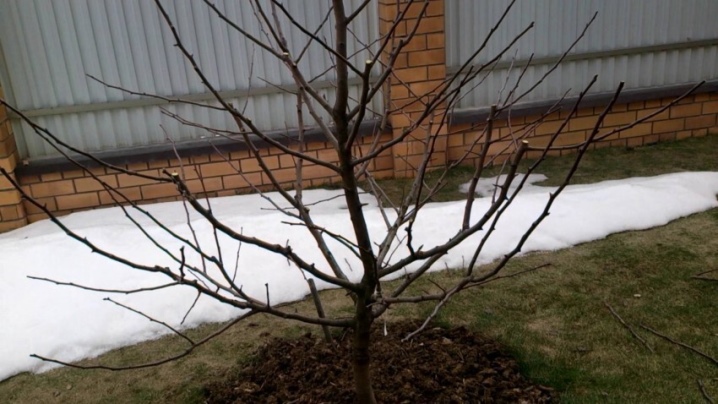
Formative
Plum crown formation takes place when the young seedling is moved into the ground. The rhizome, for which the transplant is always stressful, must provide the skeletal branches with nutrients. And for this you need a starting pruning, it also forms the crown. The stem part is to be cleaned of lateral shoots 50 cm from the ground. All branches are cut by one third to one half of the length. Next year, the trunk will have to be cut over the largest bud. Three times a year, in order for the crown to form correctly, you will have to eliminate the growth of side branches. At the same time, the defective branches of the crown will be removed.
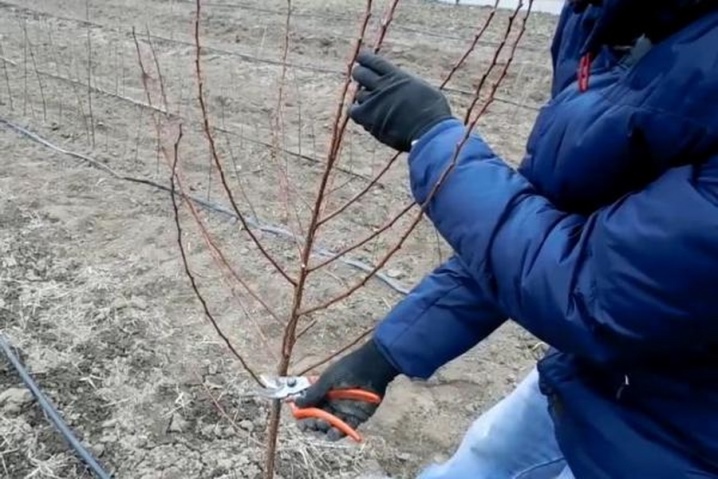
Rejuvenating
The procedure is necessary to activate the growth of plums, stimulate the emergence of young shoots, allow the crown to balance, and prevent the root system from taking on an excessive load. It seems that you can only rejuvenate a very mature tree, which is at least 10 years old. But this is not so, some plums already in the 6th and 7th year of life slow down the growth of new shoots. Productivity in such a year is falling. It happens that the tree suffers greatly from frost, it also happens that it is very hit with hail. And then, after a lot of stress, you also have to rejuvenate it, sort of restart it.
How anti-aging pruning works:
- the stem is shortened to 2 m;
- dry, sick, disturbing branches are cut off (everything is in a sanitary state);
- then the plant needs to be thinned out - 3 main skeletal branches are determined, the others are cut "on a ring";
- on those shoots that remain, they remove up to a third of last year's growth, remove 30 cm, and cut the upper knots above the lateral ones that grow outside;
- root shoots are also removed.
The shoots that grow at the base of the trunk is a common pattern, because the plum is by its nature a plant of its own rooted. In the fourth or sixth year, you will especially have to wait for the growth of root growth. And now the shoots are completely cut out at the base.
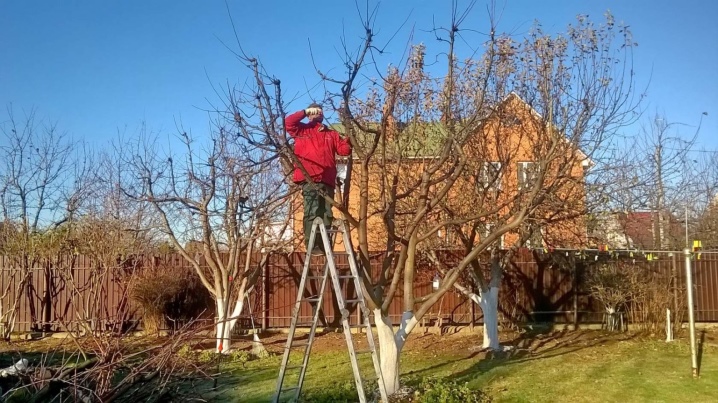
The ways
In addition to the types of pruning, there are also methods (methods) that practically show the scheme of the procedure.
"On the ring"
The "ring" refers to the influx at the base of the branch. A cut "on a ring" is done if a whole branch is to be removed. It is first sawed off with a hacksaw (sometimes a pruner is also suitable, in each case in its own way). The tool must be positioned so that its smooth blade is near the barrel, so that it goes from top to bottom parallel to it. When working, the blade should not leave any hemp or burrs. The saw cut will turn out to be even and smooth, and it must be processed with garden varnish or its analogue.
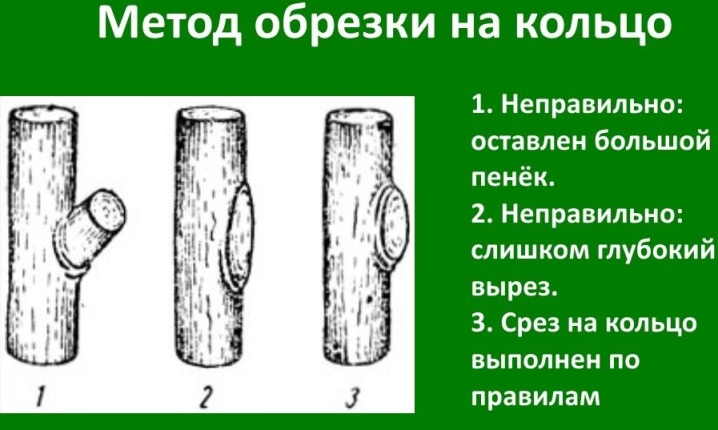
On the side escape
The method may also be referred to as "lateral escape". This method is relevant when you need to change the direction of branch growth. You should choose a promising lateral shoot, cut the branch 2 mm above the ring.
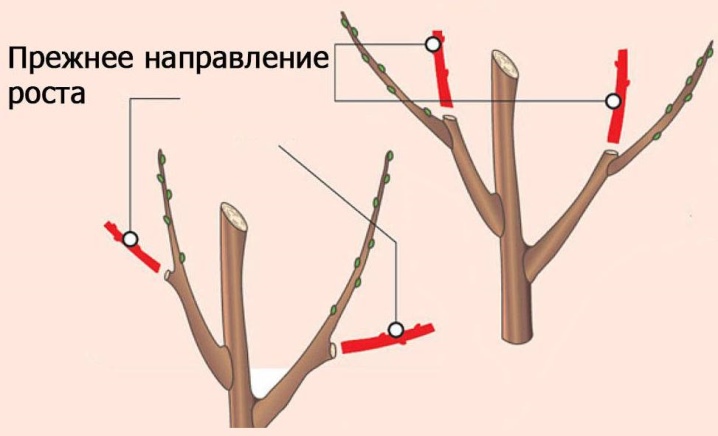
On the kidney
This cut is necessary for new fruit formations to appear. It is also needed to set the direction of growth for the branches. It is required to select a bud that is located on the desired side of the branch, make a cut above it (about 5 mm), observing an angle of inclination of 45 degrees parallel to the bud. If the cut is done differently, bacteria will attack at the base of the bud, which is fraught with the death of the branch at least.
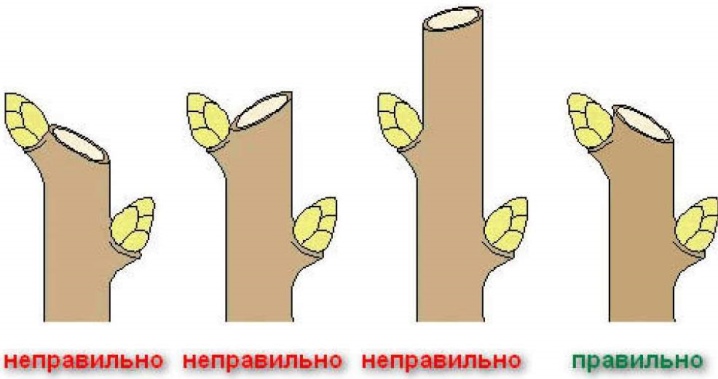
What tools to prepare?
Each site owner should have their own garden pruner. Experienced gardeners may have several such tools, but one will be enough for beginners.
Taking from neighbors, of course, is not forbidden, but this is as a means of personal hygiene - it is best to have your own and every time, before a new procedure, disinfect it.
It is great if the pruner has an "anvil" for dry branches and a bypass hacksaw for branches with a centimeter (or more) diameter.
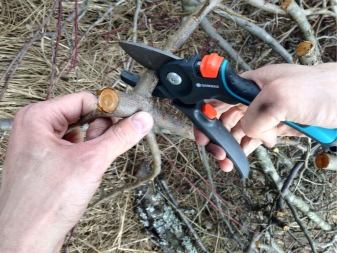
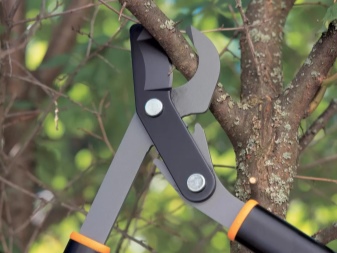
What else can be useful for pruning plums:
- the lopper is simply a more powerful pruner;
- stepladder - on something you need to get to the top;
- bow saw - if you have to tinker with thick branches;
- electric saw, chainsaw - they will cope with dry wood;
- copper sulfate - to quickly disinfect the cuts;
- oil paint on drying oil or its analog - if you have to process large wound surfaces.
All the preparation of the tools will have to be done in advance: sharpen, check the fasteners, prepare solutions, disinfect, and so on.
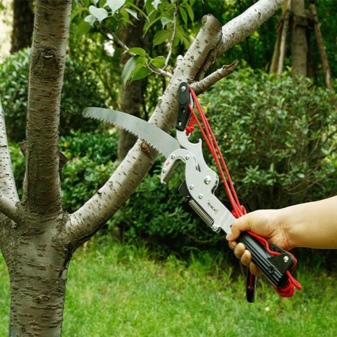
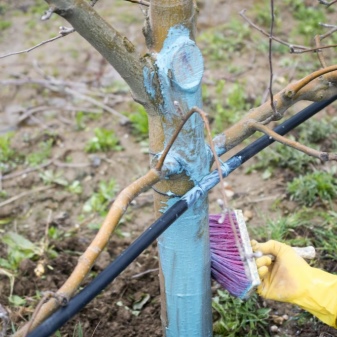
The nuances of pruning different plums
Types, methods - this is understandable, but it turns out that plums require a differentiated approach, which is determined by the age of the tree. And this is normal: what is good for a young plum is not suitable for a mature tree.
Young
A young tree is a culture that has not yet turned 5 years old. This time is enough for the plum to form a general view of the crown part, so that powerful skeletal branches (albeit a couple) grow.
How to form a multilevel crown in a young plum.
- In the first year after planting, a bole zone is outlined on the tree. It is half a meter from the ground.
- Above the mark, you need to count 5-7 buds, cut off the top above them.
- From those buds that remain, form the bottom of the plant for the next season.
- From the remaining shoots, 2-4 best (persistent, promising) are selected. The same processes that enter the bole-zone are cut off “on the ring”.
- The next tier will turn out only in the third or fourth year, and this is usually a level represented by two branches. The distance to the lower branches is 30 cm.
- The third tier (if necessary) should be done in the same way.
For beginners, such a description may seem incomprehensible, but in practice everything will work out: when a tree is in front of their eyes, the theoretical instruction is easily visualized.
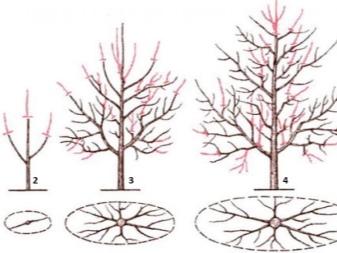
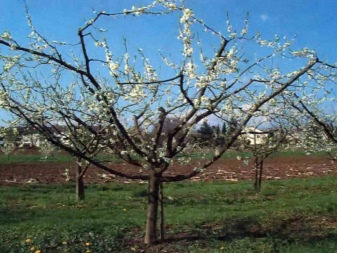
Old
The tree requires mainly rejuvenation. Here it is to be produced.
Phased pruning of old plums.
- 2-3 skeletal branches are removed, this is the maximum. Sometimes deleting one is enough. The fewer shoots are cut, the less stress the tree will endure.
- For an even cut, it is necessary to cut it from two sides, from opposite sides. If this is not done, the heavy branch is likely to break under its weight. And this will negatively affect the plant.
- Sections are disinfected, garden var is used.
- For the next season, young shoots will appear in these places. There should be 4 most powerful, viable branches, the rest will have to be removed closer to the summer.
- If the plum develops normally, fruiting is in good volume, the procedure can be repeated. For a sluggish tree, on which there are not enough buds, some additional measures are needed - for example, a new top dressing in the fall.
Pruning for rejuvenation is carried out when it is still warm enough, there are no squally winds, frosts.
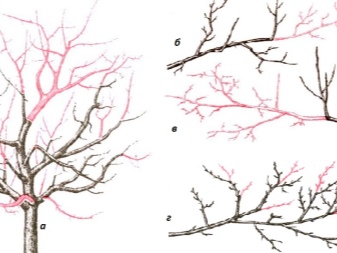

Columnar
These samples are distinguished by the correct elongated shape of the crown part. Columnar plums put forward their own requirements for pruning: the fruits grow on them along the stem surface, therefore all lateral shoots are removed strictly every year. But the tree conductor must not be touched.

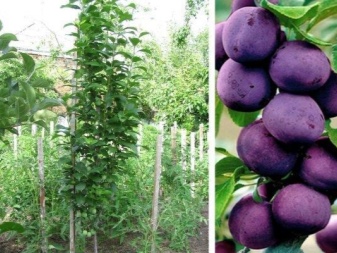
Possible mistakes
It is not uncommon for beginners to make mistakes because they think pruning is easy and it doesn't matter when and how to do it. For example, they will read that the bush form of the plum is most adapted to frost (which is true), which means that you can take care of it and cut it almost in winter. But for all trees, the rules are the same: it is optimal to do pruning in the spring, but it is possible in the fall - according to the terms set for the regions, without shifting the schedule without clear argumentation.
What other mistakes gardeners make when pruning plums.
- Do not feed the plum after pruning. Yes, this is a conditional error, because it is not always required.But in most cases, a tree experiencing stress requires help, strength, and nutrition. And complex feeding will not be superfluous.
- Leaving stumps when cutting branches. This is probably the most common mistake. Branches are cut off according to the characteristic influx of bark, the tree itself copes with the healing of the wound.
- Garden pitch immediately after branch cutting. It is necessary, but one day after the procedure. A natural protective film must first form on the wound.
- Late pruning. The branches are elementary frozen, the culture does not have strong immunity, and therefore cannot cope with frost. You need to have time to cut them so that the plum has at least a month to recover.
- Using a blunt instrument. It is fraught with leaving burrs on the tree, which can cause it to rot.
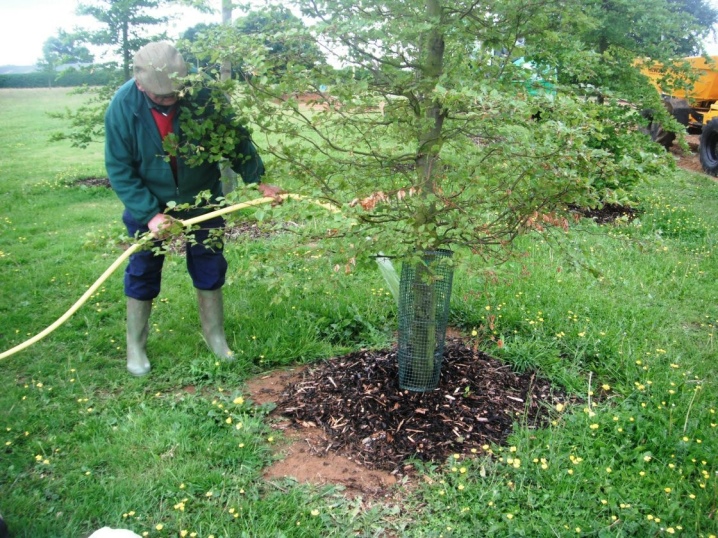
It seems that all the main things have been taken into account. It remains only to apply the information in practice, without distorting its meaning and taking into account the individuality of the request (region, age of the plum, the degree of its damage, and so on).
Successful pruning, let the plum after it only become stronger and more productive!













The comment was sent successfully.